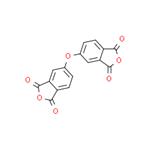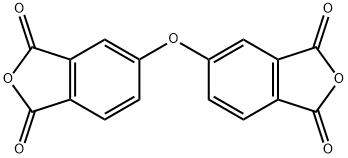Applications of 4,4'-Oxydiphthalic anhydride
May 24,2024
4,4'-Oxydiphthalic anhydride (ODPA) is commonly used in the synthesis of polyimides. ODPA-based polyimides offer excellent solvent resistance, chemical and thermal stability, low moisture absorption and excellent electrical properties. These compositions are very low in colour, UV stable and may have good processability.

ODPA is characterized by an ether bridge which introduces flexibility into the molecule. Polyimides containing this structure are thermally stable, yet should have improved processability as a molding compound and enhanced flow in composites. Preliminary unpublished data have shown ODPA to be a useful component in adhesives. The dianhydride has reasonable solubility in polar, aprotic solvents.
Polyimide films made from ODPA have high heat resistance and high specific capacitance (121 F/g). They can be well used as diaphragms in supercapacitors. The ODPA based polyimide containing P-PDA is more thermally stable, less flammable and has a dielectric constant superior to the ODA equivalent. ODPA polyimides are equal in many respects to similar materials containing BPDA with a probable advantage of processability. ODPA/p-PDA polyimide has a lower dielectric constant and dissipation factor than BPDA/p-PDA. Within this range of compositions, excellent mechanical properties with thermal durability and good resistance to acids, bases, organic solvents and boiling water are obtained. They have low moisture regain, excellent dielectric properties and low
yellowness as evidenced by superior light transmission in the 400-500 nm region of the visible spectrum.
3-BAPOPP/44ODA/ODPA-P films have low water absorption in the range of 1.5% to 1.9%, low surface energy in the range of 43.3 to 43.5 mJ/m2 , glass transition temperatures (Tg) in the range of 192.5°C to 226.1°C, and dielectric constants in the range of 2.79 to 3.02 at 1 MHz.The films also have good thermal and optical properties. The films also have good thermal and optical properties, with UV cut-off wavelengths between 346 and 364 nm.
Polyimides are also used as anodes in lithium batteries as they dissolve in the electrolyte, thus maintaining the electrochemical performance of the lithium batteries.ODPA can be hydrolysed and chelated with metal ions, such as indium, to form metal-organic frameworks (MOFs), which are used in multilevel flexible photovoltaic memory devices. These memory devices have more than 192 different levels (6-bit storage) and stable retention times (10,000 seconds).
References:
[1] R. MUNDHENKE Willis T S. Chemistry and Properties of 4,4’-Oxydiphthalic Anhydride Based Polyimides[J]. High Performance Polymers, 1990. DOI:10.1177/152483999000200106.
[2] XINHAI YU. Preparation and Characterization of 2,2-bis[4-(3-Aminophenoxy)phenyl]propane/4,4′-Oxydianiline/4,4′-Oxydiphthalic Anhydride (3-BAPOPP/44ODA/ODPA) Polyimide Films with Various Co-monomer Ratios[J]. Journal of Macromolecular Science Part B-Physics, 2013. DOI:10.1080/00222348.2012.712809.
- Related articles
- Related Qustion
Supplementation with pyridoxal 5'-phosphate monohydrate can synthesize neurotransmitters such as dopamine and serotonin, maintaining a healthy nervous system.....
Nov 4,2025Biochemical EngineeringBaricitinib is effective for Alopecia Areata and has a favorable safety profile, supporting its use in atopic dermatitis treatment.....
Nov 19,2024API4,4'-Oxydiphthalic anhydride
1823-59-2You may like
4,4'-Oxydiphthalic anhydride manufacturers
- 4,4'-Oxydiphthalic anhydride
-

- $24.00 / 25g
- 2025-12-12
- CAS:1823-59-2
- Min. Order: 1g
- Purity: 0.98
- Supply Ability: 25kg
- 4,4'-Oxydiphthalic anhydride
-

- $0.00 / 1KG
- 2025-12-12
- CAS:1823-59-2
- Min. Order: 1KG
- Purity: 98%min
- Supply Ability: 30tons/month
- 4,4'-Oxydiphthalic anhydride
-

- $10.00 / 1KG
- 2025-12-11
- CAS:1823-59-2
- Min. Order: 1KG
- Purity: 99%
- Supply Ability: 5tons






